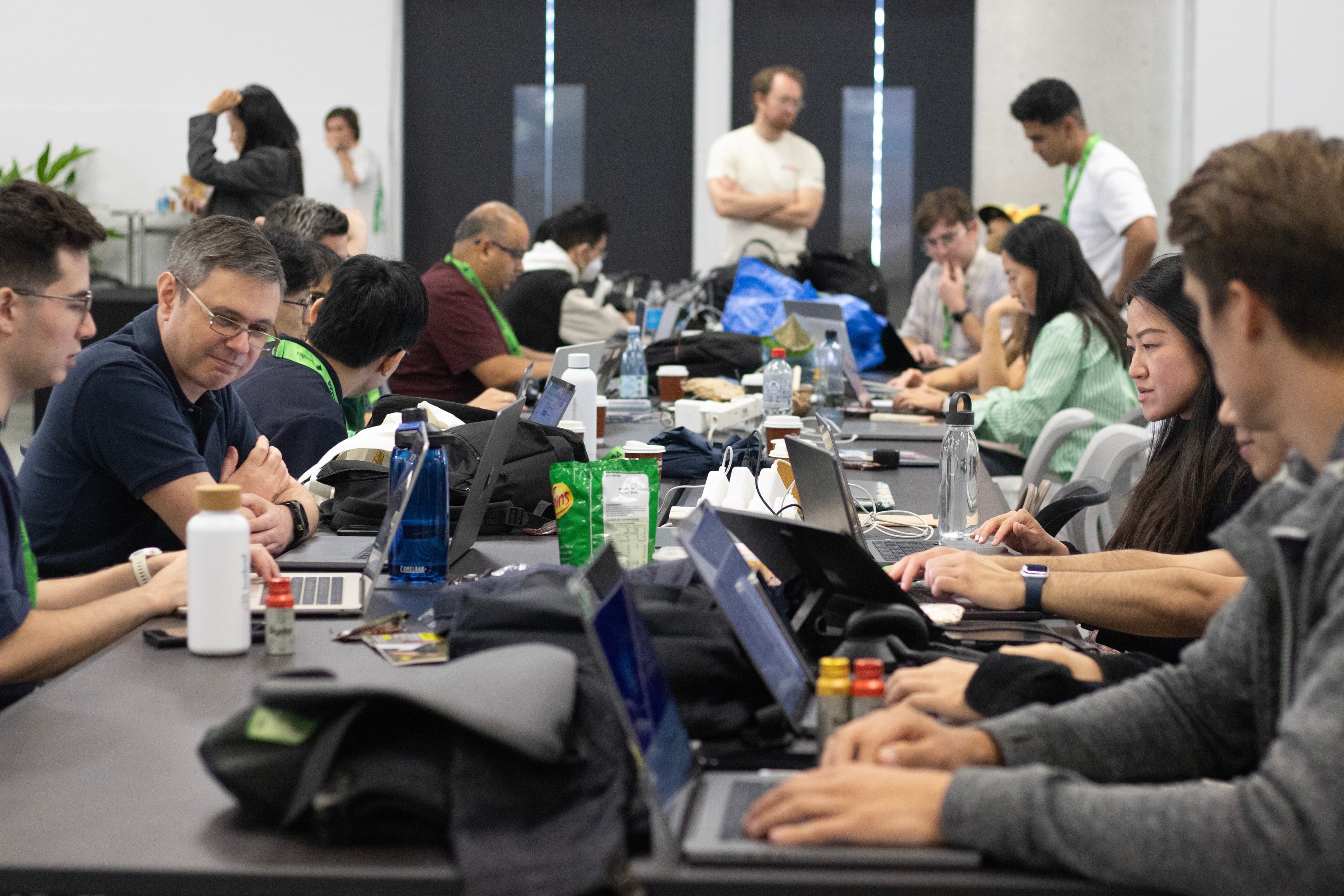Code, Compete, Conquer
Published on 2024-10-22
Just two years ago, building even a basic AI application meant wrestling with infrastructure for weeks. You'd spend days setting up servers, configuring APIs, and debugging environment issues before writing a single line of meaningful code. At the SXSW Sydney 2024 Hackathon, we built a working MVP of a conversational AI platform in just 12 hours.

This rapid acceleration in development capabilities isn't just about faster computers or better tools – it's fundamentally changing how we approach problem-solving in tech. When you can prototype and test ideas in hours rather than weeks, you start thinking differently about what's possible.
The MVP Reality
Our minimum viable product wasn't perfect – it had rough edges, limited error handling, and wouldn't scale to thousands of users. But it worked. It demonstrated the core functionality we envisioned: a small language model-powered application that could handle basic contextual conversations. Two years ago, even this basic implementation would have required deep expertise in machine learning, significant compute resources, and complex infrastructure management. Today, it took just a few API calls to Groq and some frontend work in Next.js.
Rapid Iteration in Practice

Our testing cycle was particularly telling. We could iterate on the AI's responses, tweak the interface, and deploy changes in minutes. Each deployment created a new environment where we could immediately test our changes. This instant feedback loop meant we could refine our MVP multiple times within our 12-hour window – something unthinkable in the traditional development cycle.
The New Development Paradigm
This compression of development time raises interesting questions about the future of software development. When technical implementation becomes this fast, the bottleneck shifts to design thinking and user experience. The challenge is no longer "Can we build a basic version of this?" but "What should we prioritize in our MVP?"
In our case, we spent more time debating user interaction patterns than dealing with technical issues. The ability to rapidly prototype meant we could test multiple approaches to the same problem, but it also meant we needed to be ruthless about feature prioritization. When you can build anything quickly, choosing what not to build becomes crucial.
Beyond the Hackathon

This shift has implications beyond hackathons. In startup environments, the ability to rapidly implement ideas means companies can validate their assumptions faster. Failed experiments become less costly when they only represent hours of work rather than weeks or months.
The tools we used – Groq's API, Next.js, modern cloud platforms – aren't just making development faster; they're democratizing access to advanced technology. A small team with a good idea can now build and validate an MVP with sophisticated AI features in the same time it once took to set up a basic development environment.
The Road to Production
Of course, there's a vast difference between an MVP and a production-ready application. Our hackathon project lacked proper error handling, comprehensive testing, scalability considerations, and many other elements crucial for a production system. But that wasn't the point – we proved the concept was viable and gathered valuable insights about the user experience in just 12 hours.
Looking ahead, this compression of development time will likely continue. As tools improve and abstractions become more powerful, the gap between idea and initial implementation will shrink further. This doesn't mean the end of complex software development – rather, it means developers can focus on solving more interesting problems instead of wrestling with infrastructure.
The SXSW hackathon proved that under pressure, with the right tools and focus, a small team can build a functional MVP in hours. But more importantly, it showed that we're entering an era where the limiting factor in initial software development isn't technical capability – it's the ability to quickly identify and implement the features that matter most.
The next challenge for developers isn't just learning new technical skills (though that remains important), but developing the ability to think critically about what constitutes a valuable MVP. When you can prototype almost anything in 12 hours, choosing what to build first becomes the hardest part.